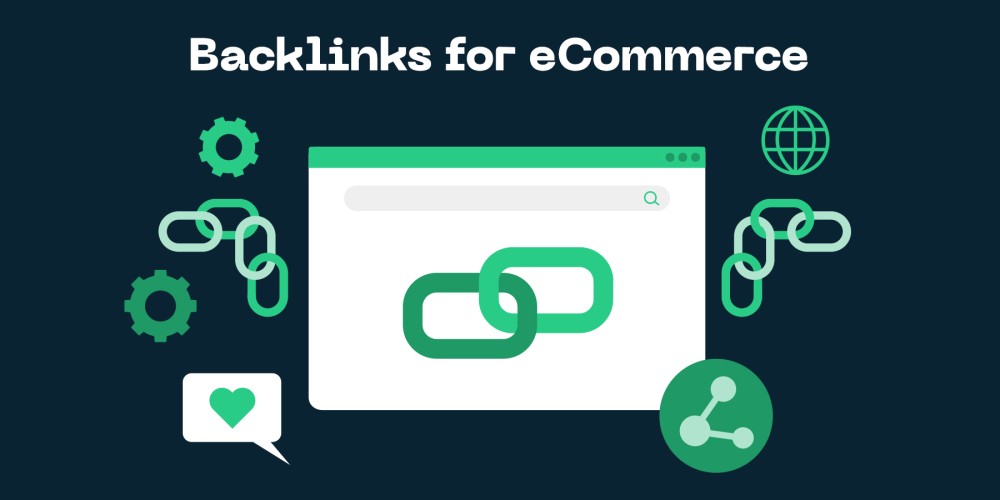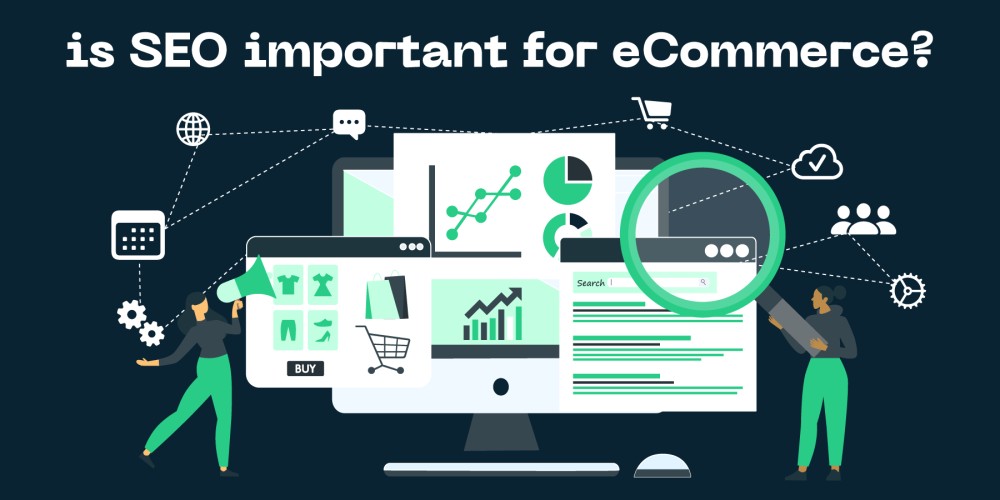Ecommerce Link Building: How to Build Backlinks That Work

Key Takeaways
- Strategic link building drives sustainable ecommerce growth by boosting search visibility, domain authority, and brand credibility.
- Quality, relevance, and diversity are the core pillars of an effective backlink strategy — not just volume.
- Ongoing monitoring through platforms like ConvertMate safeguard backlink health and prevent SEO penalties.
- White hat link building strategies such as content marketing, blogger outreach, and leveraging resource pages enhance a site’s authority and should focus on integrity and value to avoid search engine penalties.
In the evolving world of ecommerce, driving organic growth isn't just about optimizing your site — it's about building authority beyond it. Backlinks remain one of the most powerful levers for increasing search visibility, strengthening brand credibility, and accelerating revenue growth.
This blog offers a comprehensive roadmap for ecommerce link building in 2025:
- Strategy: How to build a strong, sustainable backlink profile
- Execution: Actionable techniques that drive results without risking penalties
- Monitoring: Best practices for tracking, maintaining, and safeguarding your backlink portfolio
Whether you’re leading an enterprise ecommerce operation or scaling a growing brand, mastering backlink strategy is no longer optional — it’s a prerequisite for sustainable market leadership.
Why Backlinks Matter for Ecommerce
Definition and Role of Backlinks
Backlinks — links from external websites pointing to your domain — serve as endorsements in the eyes of search engines. They validate your store’s authority, relevance, and trustworthiness, signaling that your content is worth promoting in search rankings.
Impact on Search Rankings, Credibility, and Revenue
Search engines like Google weigh backlinks heavily when determining which pages deserve to rank higher. High-quality backlinks not only improve keyword positions but also compound your domain authority over time — driving a virtuous cycle of increased traffic, higher conversion potential, and improved bottom-line results.
Moreover, backlinks from respected sources confer instant credibility with consumers, boosting trust at critical decision-making moments.
How Backlinks Differentiate Brands in Competitive Markets
In today’s saturated ecommerce environment, products alone rarely create lasting differentiation. Brands that cultivate strong backlink profiles position themselves as industry leaders, earning greater mindshare, organic discovery, and brand loyalty.
Simply put: high-performing ecommerce brands aren’t just selling products — they’re building ecosystems of trust and authority online.
Foundations of a Strong Ecommerce Backlink Profile
A successful backlink strategy is not measured by volume alone. In 2025, building a competitive backlink profile demands a sharper focus on quality, relevance, and diversity — the three pillars that determine long-term SEO impact.
Quality: Prioritizing Authority and Trust
Links from authoritative domains — established industry leaders, reputable publications, and trusted resources — pass significantly more SEO value than links from low-quality, spam-ridden sites.
Prioritizing quality over quantity ensures that every backlink strengthens your domain’s reputation rather than diluting it.
Relevance: Earning Links from the Right Sources
Not all backlinks are created equal. Search engines reward contextual relevance — meaning links from sites that operate within or adjacent to your industry. For example, a link from a leading health and wellness site is far more valuable to a fitness ecommerce brand than one from an unrelated tech blog.
Building relevance into your link strategy not only boosts rankings but also drives highly qualified traffic from audiences already interested in your niche.
Diversity: Creating a Natural, Balanced Profile
A strong backlink profile mirrors organic behavior.
This includes:
- A healthy mix of dofollow and nofollow links
- Varied anchor texts (not just keyword-optimized phrases)
- A spread across different domains — blogs, news outlets, directories, and niche-specific sites
Maintaining diversity reduces the risk of penalties, improves link authenticity, and signals to search engines that your brand’s authority is being built legitimately, not manufactured.
3 Core White Hat Link Building Strategies
Building a high-impact backlink profile starts with mastering sustainable, white hat techniques — approaches that not only earn links but also protect your brand’s long-term reputation.
These are the foundational tactics that ecommerce leaders are deploying today to strengthen their market positions without risking search penalties.
Content Marketing for Backlinks
Content remains the single most powerful driver of organic backlinks.
- Create High-Value, Shareable Assets: Long-form guides, original research, and visually compelling infographics are proven formats for attracting links naturally.
Invest in content that solves real problems or offers unique insights — the kind that industry sites and influencers want to reference. A great example is the link building statistics published by link building service Editorial.Link. - Amplify Reach with Smart Tools: Platforms like BuzzSumo help identify trending topics, track brand mentions, and spotlight influencers most likely to engage with your content — increasing your chances of earning backlinks at scale.
Content that is deeply valuable and widely visible forms the engine behind sustainable link acquisition.
Blogger and Influencer Outreach
Relationship-driven outreach remains one of the highest-ROI strategies for earning quality backlinks.
- Targeted Collaborations: Partner with bloggers, influencers, and subject-matter experts in your niche to secure guest posts, product reviews, and expert roundups.
- Streamlined Execution with Outreach Platforms: Tools like Respona, Pitchbox, and HARO (Help a Reporter Out) enable scalable, personalized outreach — helping you land placements in high-authority publications with less manual effort.
Authentic collaborations position your brand within trusted ecosystems and multiply your backlink potential.
Resource Pages and Directory Listings
Often overlooked but highly effective, resource pages and reputable directories offer valuable, targeted backlink opportunities.
- Find the Right Pages: Use advanced search operators to locate niche-specific resource lists and directories relevant to your industry.
- Prioritize Relevance and Authority: Focus on reputable directories and curated resource pages — not generic, low-quality link farms.
Additionally, well-structured internal linking within your own site strengthens your overall SEO architecture and improves user navigation, creating a more comprehensive organic strategy.
Advanced Link Building Techniques
Once foundational strategies are in place, scaling your backlink profile requires more sophisticated, data-driven tactics. Advanced link building separates high-performing ecommerce brands from those stuck competing on basic tactics alone.
Competitor Backlink Analysis
Competitive intelligence is a strategic advantage.
- Audit Competitor Backlink Profiles: Using tools like Semrush or Ahrefs, analyze where competitors are earning their links, what content is performing best, and which referring domains you can target.
- Identify Gaps and Opportunities: Find sites linking to your competitors but not to you — then offer superior content or value propositions to win those links yourself.
Strategic competitor analysis helps you shortcut the path to building a strong, targeted backlink portfolio.
Broken Link Building
Broken links are liabilities for site owners — and opportunities for you.
- Identify Broken Links on Relevant Sites: Use crawler tools or browser plugins to uncover broken outbound links on industry-relevant websites.
- Offer High-Value Replacements: Position your content as the natural solution to fix broken references, simultaneously providing value to the site owner and securing a valuable backlink.
This approach creates a win-win scenario that often leads to faster, easier link acquisition.
Skyscraper Technique
Standing out in saturated content landscapes requires exceeding existing standards.
- Find Top-Performing Content: Locate the highest-linked assets within your niche through SEO and content analysis tools.
- Create a Superior Alternative: Develop a piece that is more comprehensive, better designed, and more current than the original.
- Proactive Outreach: Reach out to sites currently linking to the older version, showcasing why your resource offers greater value.
When executed effectively, the Skyscraper Technique can dramatically accelerate link growth and brand authority simultaneously.
Monitoring and Managing Your Backlink Profile
Building backlinks is only half the equation — maintaining a healthy, high-performing backlink portfolio is critical to protecting your SEO investments over time.
Regular monitoring allows you to track the quality, relevance, and impact of your backlinks, quickly identify risks, and make strategic adjustments as needed.
Key Metrics to Watch
- Domain Authority (DA): A measure of the overall strength of your website based on the quality and quantity of your backlinks.
- Topical Trust Flow: Evaluates how trustworthy your backlink sources are within specific industry verticals.
- Anchor Text Diversity: Ensures a natural backlink profile by mixing branded, generic, and keyword-rich anchors — avoiding patterns that could trigger search engine scrutiny.
Staying on top of these metrics helps maintain a balanced and resilient backlink portfolio.
Tools to Track Backlink Performance
Platforms like Semrush provide detailed insights into new backlinks, lost backlinks, referring domains, and anchor text trends. Regular reporting ensures you have full visibility into how your backlink strategy evolves over time.
Additionally, ConvertMate integrates backlink monitoring within its broader search optimization workflows, enabling ecommerce teams to track link quality, detect anomalies, and maintain SEO health — all within a unified platform designed for ecommerce growth.
Identifying and Disavowing Toxic Backlinks
Not all backlinks are beneficial — low-quality, spammy links can actively harm your SEO performance.
- Spotting Toxic Links: Use audit tools to flag backlinks from suspicious domains, irrelevant industries, or link networks.
- Disavowing Risky Links: Once identified, submit a disavow file through Google Search Console to formally distance your site from harmful links, preserving your domain’s trustworthiness.
Regular audits and proactive disavowals protect your backlink strategy from unseen risks and maintain your competitive edge.
Frequently Asked Questions
1. Why are backlinks so important for ecommerce SEO?
Backlinks act as endorsements from other websites, signaling to search engines that your store is credible and trustworthy. Strong backlink profiles significantly improve search rankings, drive organic traffic, and boost brand authority.
2. What’s more important — the number of backlinks or their quality?
Quality matters far more than quantity. A few backlinks from authoritative, niche-relevant sources can drive better results than hundreds of low-quality links.
3. How can ecommerce brands find backlink opportunities?
Brands can uncover backlink opportunities through competitor analysis, influencer outreach, resource page targeting, and broken link building — all supported by tools like Semrush, BuzzSumo, and ConvertMate.
4. What’s the risk of using black hat or paid link-building tactics?
Black hat tactics (like buying links or participating in link schemes) can trigger search engine penalties, damage your domain authority, and significantly harm long-term growth prospects.
5. How often should ecommerce brands audit their backlink profiles?
Regular audits — at least quarterly — are recommended to identify toxic backlinks, track new links, and disavow harmful domains before they impact search performance.
6. Can internal linking help with backlink strategies?
Yes. While internal links don't replace external backlinks, strong internal linking improves site structure, enhances SEO performance, and maximizes the value passed from inbound links across your site.
7. How does ConvertMate help with backlink management?
ConvertMate integrates backlink monitoring into its broader search optimization workflows, enabling ecommerce teams to track backlink quality, detect risks, and maintain SEO health — all in one centralized platform built for ecommerce brands.
Summary
Effective link building is no longer about chasing volume — it’s about earning authority, credibility, and trust at every stage of your ecommerce growth journey.
The most successful brands in 2025 are those that invest in:
- Quality: Prioritizing backlinks from reputable, high-authority sources
- Relevance: Focusing on industry-specific, contextually aligned links
- Consistency: Building and maintaining a healthy backlink profile over time through ongoing strategy, execution, and monitoring
By combining foundational white hat techniques — like content marketing, blogger outreach, and resource page targeting — with advanced tactics such as competitor analysis, broken link building, and the Skyscraper Technique, you can build a resilient backlink ecosystem that accelerates organic visibility and drives sustainable revenue growth.
Ultimately, brands that treat link building as a long-term investment, not a one-off tactic, will be the ones that dominate their markets in the years ahead.


